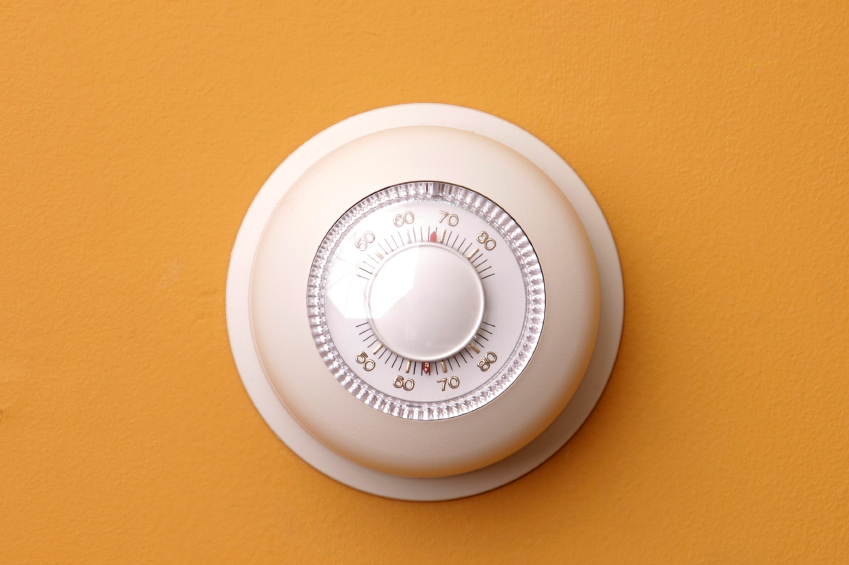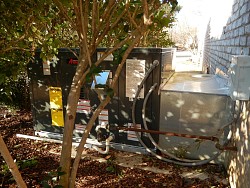How to Get the Most from a Programmable Thermostat
 Programmable thermostats can be set to automatically adjust the temperature at different times of day. The idea is to maintain comfort while reducing energy usage. For example, you can automatically lower the winter temperature to 58 degrees while you are sleeping or away at work. You can then set the thermostat to automatically rise to a more comfortable temperature when you wake up or come home.
Programmable thermostats can be set to automatically adjust the temperature at different times of day. The idea is to maintain comfort while reducing energy usage. For example, you can automatically lower the winter temperature to 58 degrees while you are sleeping or away at work. You can then set the thermostat to automatically rise to a more comfortable temperature when you wake up or come home.
Programmable thermostats have become fairly standard. They are even legally required for some new construction in California and other areas. Still, not all programmable thermostats are created equal. To optimize energy savings, choose the right model, install it correctly and customize it for your lifestyle.
Buy the right thermostat(s)
Check with your HVAC contractor for the appropriate thermostat for your heating and air conditioning units. Heat pump and electric baseboard heating systems require specialized thermostats. Radiant floor heating has an unusually slow response time, but some thermostats can be adjusted to compensate.
The Energy Star label is a simple indicator of a reliable, money-saving programmable thermostat. To carry the Energy Star label, thermostats must allow at least two separate programs (typically used to differentiate between weekdays and weekends), and provide four daily settings.
In addition to the standard model with separate settings for weekends and weekdays, there are also programmable thermostats that allow for seven different settings for each day of the week, and 5-1-1 thermostats that can be programmed with separate settings weekdays, and each weekend day.
Several other energy-saving features are also available. You can program some thermostats remotely by phone or Internet, allowing you to delay the evening temperature adjustment if you work late. Many newer models also have so-called smart recovery controls that recall how long it takes to reach the set temperature, and start adjusting early enough to reach the right setting at the right time.
Other models have indicators showing when you need to change air filters or service your HVAC system, helping foster further energy savings. Also, large homes with multiple heating and cooling zones may require programmable thermostats for each zone.
Two additional types of programmable thermostat encourage maximum savings, though they may be impractical for most homes. An occupancy thermostat defaults to the energy-saving temperature until you press a button that starts a “comfort period.” These models work well for homes that are regularly unoccupied for long periods. Similarly, light-sensitive thermostats automatically make the temperature more comfortable when the lights are on, then fall back to energy-saving mode when the lights are off. They are efficient and great for office buildings, but may not be as useful for bedrooms.
Install the thermostat correctly
Place the thermostat on an interior wall so temperature gauges are not effected by outside temperatures. Also make sure it is not effected by heating or cooling vents, direct sunlight, cold drafts or other items that might throw off the temperature.
Set the thermostat efficiently
You can cut energy bills by about 3 percent for each degree you lower the thermostat all month during the winter (or raise it in the summer). This translates to a 1-percent reduction for each degree during an eight-hour workday.
Try to set each temperature for at least four hours. If you let the temperature drop, then force the furnace to work overtime resuming the previous setting after a shorter period, you may not realize any energy savings.
You can significantly reduce energy bills by buying the right programmable thermostat, then installing and setting it correctly.
Looking for a Pro? Call us (866) 441-6648

Heating & cooling Average Costs
HVAC Contractors Experiences

Desperate For New Air Conditioning On A Hot, Humid July Weekend

Heat Pump Replacement By A Contractor I Can Trust



